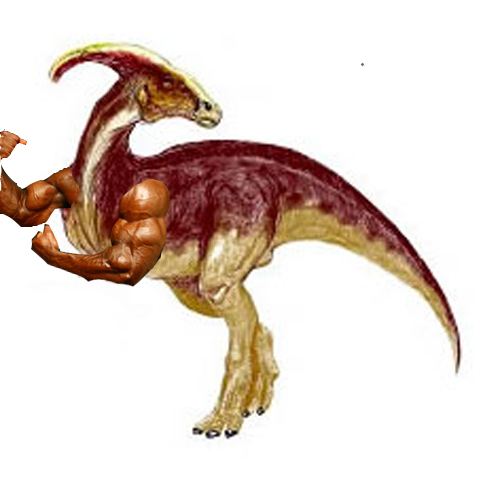Parasaurolophus Walkeri was discovered in 1922 by William Parks in Alberta. It was named from a skull and partial skeleton. Parasaurolophus' name means "near crested lizard" and it is one of the world's most famous dinosaurs. Parasaurolophus lived during the Late Cretaceous, and was a member of the hadrosaur family, making it one of the many "dinosaur cows." It measured about 9 meters long and about 2 meters tall. Parasaurolophus is thought to have been native to forests all over north america, since many scientists believe the subspecies discovered in New Mexico, Parasaurolophus Cyrtocristatus, was a female or juvenile of P. Walkeri.
Parasaurolophus is most well known for the huge 3 foot crest projecting out from the back of the beast's head. This crest was hollow, and connected to the nasal cavity. Most scientists agree this crest would have created a deep, resonating, rich, buttery call to signal to other members of the species. In fossilized crests, the delicate passages are damaged too much to allow air through them anymore, hence why no one plays the Parasaurolophus crest in today's instrumental groups. It is also to be noted that since the discovery of Cyrtocristatus, it is believed that these animals exhibited sexual dimorphism, with only the males possessing these crests. Analysis of the skeleton also revealed that these dinosaurs had remarkably strong shoulder muscles. They would use these muscles to push through the dense foliage of their forest homes.
Parasaurolophus: Don't Mess With The Best
That's it for today. I'm not sure what will be next. I'll have to think of something.
-Athos
Paul, Gregory S. The Princeton Field Guide to Dinosaurs. Princeton, NJ: Princeton UP, 2010. Print.

No comments:
Post a Comment